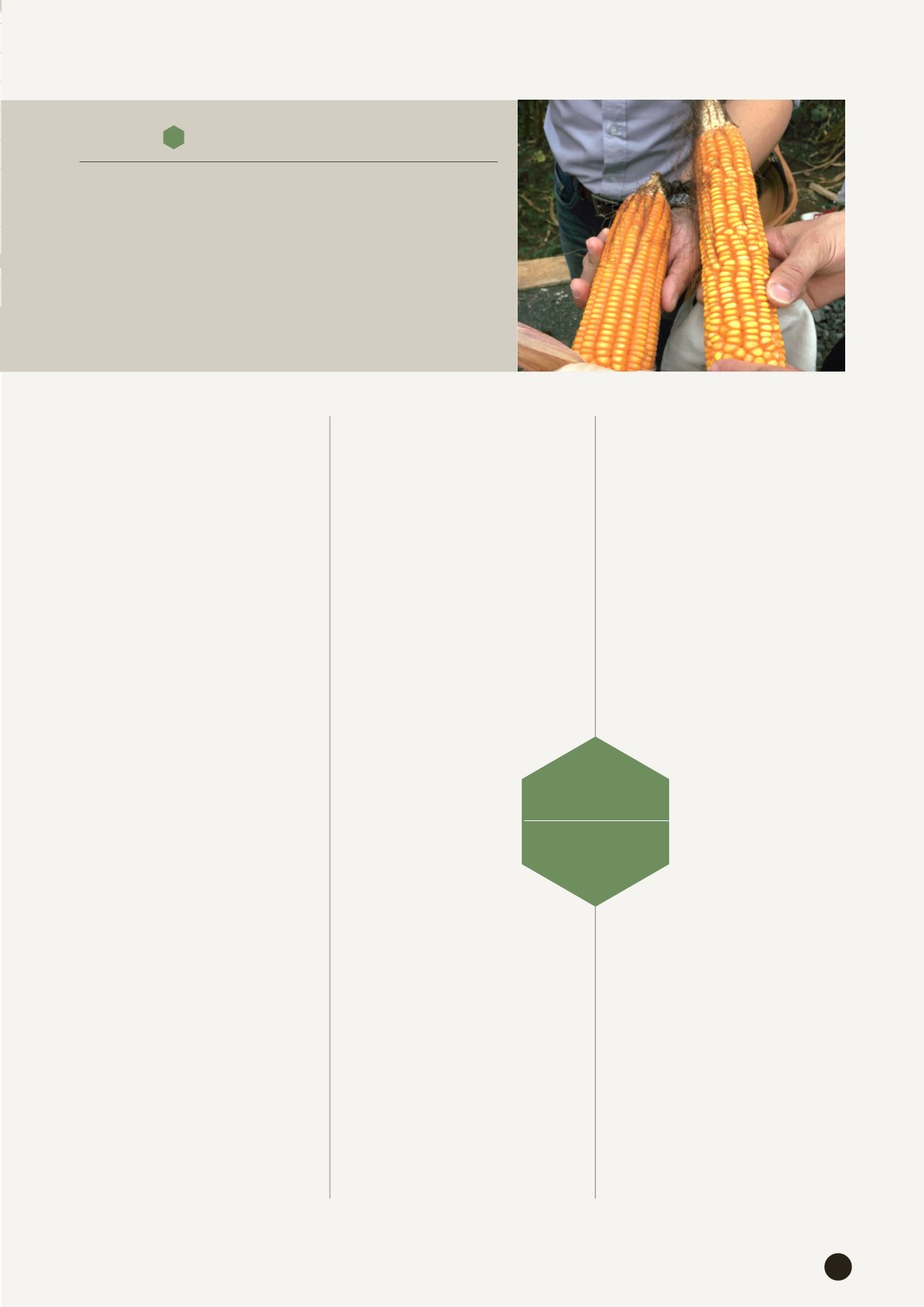

Operations
25
According to UN statistics, some
37.8 percent of the population of
São Tomé and Príncipe live below
the poverty level, while 15.1 percent
live in extreme poverty. About 40
percent of all food rely on imports
and 22 percent of the population
live in a state of food insecurity.
For this reason, since 2010, the
African Development Bank has
defined São Tomé and Príncipe as a
fragile state and has made building
public administration capacity and
improving food security the focus
for the country’s 2012 to 2016
Country Strategy. After discussions
with the São Tomé Agriculture
Division, it was decided to assist
the country's rural areas develop
production for traditional starch
crops like maize, cassava, taro, and
sweet potatoes and increase rural
food self-sufficiency. At the same
time, soybeans were introduced to
increase the population’s intake of
vegetarian protein.
Improve Seed Quality
and Promote Sustainable
Agriculture
To coordinate with the Country
Strategy of São Tomé and Príncipe,
the project was divided into three
major elements:
1. Increase the capacity of São
Tomé and Príncipe Centro de
Investigação Agronómica e
Tecnológica (CIAT) to produce
high-quality food crop seeds
(seedlings) and by introducing
outside high-quality seed varieties
to match these, raise the overall
production capacity for food crops.
2. Cooperate with São Tomé and
Príncipe agricultural extension
departments to extend planting of
food crops in suitable soils by 700
hectares, reclaim 120 hectares of
arable land, and teach farmers
how to use agricultural waste
to make compost, raising land-
use efficiency and increasing
crop yields. It is anticipated that
by the end of this project, food
crop production in São Tomé and
Príncipe could increase by 3,214
tons annually.
3. To consolidate the improved crop
production capacity
resulting from this
project, this year the
Penha Agricultural
Cen t e r has been
brought in to help
p r o d u c t i o n a n d
marketing groups
consult with agents
to conduct wholesale
ma r ke t i ng . A l so ,
Taiwan’s experience
in developing agro-marketing
has been introduced and a
farmers’ market is held regularly
to strengthen direct ties between
producers and consumers and
raise farmers’ earnings.
T h i s p r o j e c t h a s b e e n i n
operation for four years since its
inception in 2012. With this project’s
guidance, CIAT has now set up a
seed (seedling) nursery and built
a foundation for the production of
high-quality seeds (seedlings). In
terms of increased food production,
crop areas have been extended:
maize to 325 hectares, cassava to
100 hectares, taro to 40 hectares,
sweet potatoes to 23 hectares, and
soybeans to 70 hectares. Fourteen
simple compost-making sites have
been built, yielding 4,260 tons of
fertilizers.
In the future, the Penha Agricultural
Center will be expanded into a
marketing center and wholesale
produce market, and the production
and marketing groups from various
regions who took part in consultations
wi l l f unc t i on as nodes i n t he
production and marketing network,
and gradually build a
solid market transaction
system and optimized
farmers’ organizations.
Ultimately, the project
a i m s t o d e v e l o p
sustainable agriculture
and lessen reliance on
imports, achieving the
goal of eliminating rural
hunger and poverty.
60
Estimated rise in per unit
area of maize yields
%
São Tomé and Príncipe
Food Crops Development Project
1
Case Study


















